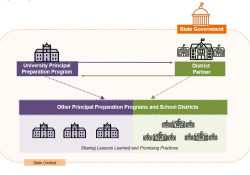By: Yvonne Godber
As a trainer and evaluator working on video-based professional development resources at Teachstone (a company founded by Professors Pianta and Hamre at the University of Virginia), I was so excited to attend my first Learning Forward conference in Dallas in December. Given my interest in strategically using video with teachers and coaches to drive changes in instructional practices, I couldn’t wait to learn more from others around the country who share the conviction that nothing is more powerful than seeing one’s own teaching in action. Needless to say, the sessions and networking opportunities did not disappoint.
Although I wasn’t able to join all of the many video sessions I wanted to attend, I did notice a few important themes around using video-based technology to support teachers:
1. Video recording is a powerful, yet under-utilized, method to support teachers in testing and buy-in new classroom practices.
Why is video such a valuable tool? Think of athletes who regularly watch recordings of themselves, analyzing every nuanced step to visualize, internalize, and guide their next attempt. Videos show what you do well, reveal areas for growth, and do so in your very own context: Video recordings are highly personal, objective, and relevant.
So why aren’t we using it more often, when using video-based professional learning actually decreases barriers presented by in-person support, such as time, distance (especially in rural districts), or the need to remove highly valued mentor teachers from teaching their own students to go observe a peer? The flexibility of using videos increases the frequency, intensity, and quality of feedback available to teachers to reflect on their strategies and to become better observers of their students. The insights and data that come from this process encourage a cycle of growth where teachers can recognize, test, and refine new, more effective, strategies with their students.
I loved how St. Vrain Valley School District in Colorado, which uses Edthena’s video platform, describes video as “an accelerant for professional growth.” The educators from St. Vrain explained how the growth curve of human adaptability lags behind our access to technology. Added to this, antiquated district mindsets and adaptability can further hinder our ability and willingness to test and use emerging technology. The fact is, many new teachers arrive at their first district accustomed to using video in their pre-service programs – only to quickly pick up on the fear of using it in their new setting! A good place to start testing the use of video in many cases is with less experienced teachers who are looking for – indeed often expecting – added supports.
2. The process has to be non-evaluative to empower teachers and build their buy in, trust, and willingness to engage the technology in a reflective process.
Teachers need to know up front that this truly is for their own professional growth, and in no way, shape, or form will be used as part of any evaluation process – unless THEY decide they want it to be included! As powerful as it can be to watch video of oneself in the classroom, the very act of recording oneself often makes people feel vulnerable before comfort and trust grows. Communication all the way up and down the ladder that this process is for teachers’ personal use and reflection with trusted –ideally teacher-selected – colleagues really matters.
Capital School District (DE) — which is using Teaching Channel’s video platform for their comprehensive 4-year long new teacher induction program – summed it up so well (paraphrased here): When implemented in a thoughtful – and, importantly, non-evaluative – way, you empower teachers to build their own sense of self-agency. You know it works when you have evidence of teachers expressing: “This is what I do. This is what I need. And this is how you can help me get there.”
3. Easy-to-use “asynchronous” (read, accessible and convenient) resources that are tied to overarching and proven standards and rubrics are important ingredients to successfully using video for professional growth.
Technology really can help to work smarter. And technology that allows users to integrate important standards, rubrics, and systems important to their unique context are even smarter. Platforms that allow teachers to easily record and upload their videos, with added functionality such as having teachers, peers, and coaches add time-stamped comments, or embedding and linking to district priorities, are not only effective and efficient tools – they also build community.
Presenters at Learning Forward highlighted how their online platforms allowed teachers to interact, share feedback, and work on shared priorities in support of both personal and district goals. The fact that they could do so at their own convenience is a key piece to the success of the video implementation puzzle. Community chats, video clubs, action research, lesson studies, content modules, and video libraries are just a few of the ways video platforms allow context-relevant and data-driven processes to grow and thrive within districts.
Colleagues from AIR, Learning Forward, and Waco School District, and I presented on AIR’s replication study of Teachstone’s research-, strength, and video-based coaching model MyTeachingPartner-Secondary (MTP-S). Guided by the Classroom Assessment Scoring System (CLASS) tool for measuring and improving the effectiveness of classroom interactions, MTP coaches select clips of effective teaching moments from videos uploaded by their teachers, and create reflection questions teachers respond to in preparation for a 1:1 in-person or online conference cycles every two weeks. Online videos and resources (as Waco coach Jody Flowers calls “the nectar”), a PD network for coaches, and a CLASS online community further support this intervention model that research has shown result in improved student academic, behavioral, and social outcomes.
*This study is currently recruiting high school coaches and teachers! For further information please contact Dr. Sarah Caverly at scaverly@air.org
Without a doubt, video-based reflection for teachers is a disruptive technology that is quickly gaining support and traction around the country. There are definitely lessons learned that need to be rigorously tested and shared to identify with more specificity what works, along with what doesn’t work. As evidenced by the number and quality of sessions at Learning Forward’s conference on using video-based learning across different grade levels and geographic settings, it’s fair to say that when implemented carefully, and collaboratively, video has the power to change practices and build a community growth mindset. I look forward to engaging with others and following collective lessons learned as we move forward down this promising path together.
About the author
Yvonne Godber is the research and evaluation specialist at Teachstone.




![Poil blog v1[1]](https://learningforward.org/wp-content/uploads/bb-plugin/cache/poil-blog-v11-custom_crop.jpg)




